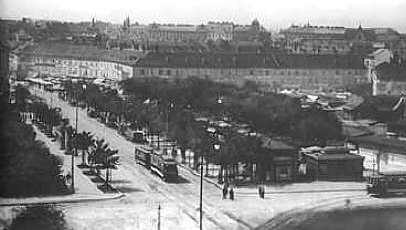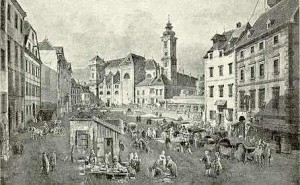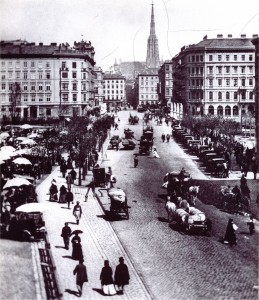Viennese Markets – Part 2

From the Middle Ages to today – the markets are part of the cityscape
Are you looking for special foods or non-everyday specialties, or perhaps out-of-the-ordinary experiential gastronomy? If so, then you’re sure to find something at Vienna’s open-air markets. It’s hard to believe that this shopping institution has existed since the Middle Ages – and they continue to enjoy increasing popularity. In part 2 of this series, join me in taking a look into the past.
History of markets in Vienna
Markets have been an integral part of Viennese city life ever since the Middle Ages. With the relocation of the Babenberg residence to Vienna in the year 1150, the city grew at breakneck speed. Duke Leopold VI therefore issued the so-called “staple right,” which meant that all merchants passing through the city had to lay down their wares in the city and offer them to the populace for purchase. This is how the first markets arose. Street names such as Hoher Markt (“High Market”), Neuer Markt (“New Market”), Getreidemarkt (“Grain Market”), Fleischmarkt (“Meat Market”)or Bauernmarkt (“Farmers’ Market”) are reminiscent of this era of market life in downtown Vienna. The “Marckt zu Wien” (“Marcket [sic] to Vienna”) – probably today’s Hohe Markt – is the city’s oldest market and was first mentioned in writing in 1208. The oldest market regulations in Vienna stem from the mid-13th century. In addition to pricing regulations and legal provisions, they contain a listing of fines for exorbitant prices, cheating on weights and measures, and watering down drinks. The well-known “cucking stools,” in which deceitful bakers were shoved into the Danube in a cage, stems from this era. There were dairymaids, fruit schnapps, cheese scoops, and lots more. While the craftspeople drew back into their workshops more and more, the typical market stands with their foods remained as important stations for providing nutrition.
The legendary market women, with their loose tongues and loud market calls designed to attract customers, arose in the ensuing centuries (see blog article “Viennese Types”).
Due to the legendary Viennese beef cuisine, meat was always accorded special significance in Vienna. Starting in 1550, a live cattle market was held on the left Wienfluss (Vienna River) bank. At this market, cattle breeders from Hungary made their way into the city via Bruck an der Leitha with their herds. In 1797, the cattle market migrated towards St. Marx, where construction of a slaughterhouse commenced in 1846. This was closed in 1997 as a result of the increasing competition.
In 1865, construction work commenced on the Grossmarkthalle (Wholesale Market Hall) “Wien Mitte” (Vienna Central Station) on Invalidenstrasse – for better providing for the increasing Viennese populace. The Grossmarkthalle was once again expanded in 1904. In 1972, already part of it was removed, and the rest was closed in 2008. Three additional wholesale market halls, which had also been erected at the end of the 19th century and at the turn of the century, fell victim to other construction activities or are nowadays no longer used as covered markets.
With the increasing number of supermarkets in the 1960s–1980s, the markets were massively weakened and nearly vanished into thin air. With gastronomy receiving a license in 1992, the popularity of the markets once again increased – people could now drink a coffee or eat a little something directly on-site, surrounded by the lively and typical market atmosphere, once they finished shopping.
In this spirit – read about the Viennese markets today in the forthcoming part 3, and visit the Naschmarkt and Sonnwendmarkt together with me!
Image credits: © www.wien.gv.at , www.stadtbekannt.at












